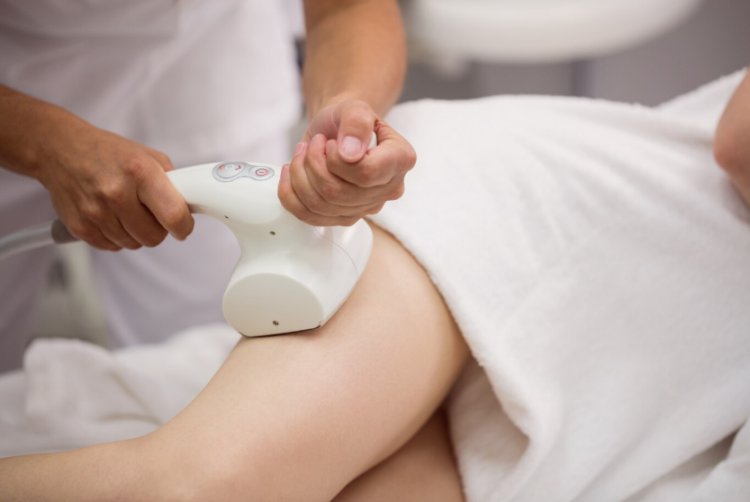Cracking the Cellulite Code: Exploring Causes, Remedies, and Proactive Measures
Cellulite, a common cosmetic concern primarily affecting women, manifests as the dimpled or lumpy appearance of the skin, particularly in areas like the thighs, buttocks, and abdomen. Despite its prevalence, cellulite remains poorly understood by many. In this comprehensive guide, we explore the multifaceted aspects of cellulite, including its causes, treatment modalities, and preventive strategies. #CelluliteCauses #CelluliteTreatment #CellulitePrevention #CelluliteRemedies #UnderstandingCellulite #GeneticFactors #TopicalCreams #LifestyleChanges #MassageTechniques #NonInvasiveProcedures

Causes of Cellulite:
1. Genetics:
Genetic predisposition plays a significant role in determining an individual's susceptibility to cellulite. Certain genes may influence factors like fat distribution, connective tissue structure, and hormonal regulation, contributing to the development of cellulite.
2. Hormonal Factors:
Hormonal fluctuations, particularly estrogen, have been implicated in the formation and progression of cellulite. Puberty, pregnancy, and menopause are periods characterized by hormonal changes that can exacerbate cellulite appearance.
3. Connective Tissue Structure:
The arrangement of collagen fibers in the dermis differs between men and women. Women's collagen fibers form a perpendicular orientation, creating compartments where fat cells can protrude, leading to the characteristic dimpled appearance of cellulite.
4. Lifestyle Factors:
Sedentary lifestyle, poor dietary habits, smoking, and excessive alcohol consumption can all contribute to the development and worsening of cellulite. Lack of physical activity, coupled with an unhealthy diet, can lead to weight gain and decreased muscle tone, exacerbating the appearance of cellulite.
Treatment Options:
While complete eradication of cellulite may be challenging, various treatment modalities aim to reduce its appearance and improve skin texture:
1. Topical Treatments:
Topical creams and lotions containing ingredients like retinol, caffeine, antioxidants, and herbal extracts claim to enhance circulation, promote collagen synthesis, and reduce inflammation, thereby improving the appearance of cellulite.
2. Massage Therapy:
Massage techniques such as lymphatic drainage massage, deep tissue massage, and cellulite-specific massage aim to stimulate blood and lymphatic flow, break down adipose tissue, and improve skin elasticity, leading to a reduction in cellulite visibility.
3. Non-Invasive Procedures:
Non-invasive procedures such as laser therapy, radiofrequency treatments, and acoustic wave therapy target cellulite by heating and disrupting fat cells, stimulating collagen production, and promoting tissue remodeling, resulting in smoother skin texture.
4. Surgical Interventions:
Invasive procedures like liposuction, subcision, and laser-assisted liposuction involve physically removing fat deposits or releasing fibrous bands tethering the skin, thereby reducing the appearance of cellulite. These procedures are typically reserved for severe cases and carry risks associated with surgery.
Prevention Strategies:
Preventing cellulite or minimizing its appearance involves adopting healthy lifestyle habits and skincare practices:
1. Dietary Modifications:
Consuming a balanced diet rich in fruits, vegetables, lean proteins, and healthy fats while limiting processed foods, sugar, and saturated fats can help maintain a healthy weight and reduce cellulite formation.
2. Regular Exercise:
Engaging in regular physical activity, including cardiovascular exercises, strength training, and targeted workouts focusing on problem areas, helps improve muscle tone, circulation, and lymphatic drainage, reducing the visibility of cellulite.
3. Hydration:
Adequate hydration is essential for maintaining skin elasticity, promoting detoxification, and supporting overall skin health. Drinking plenty of water throughout the day helps flush out toxins and prevent fluid retention, contributing to smoother skin texture.
4. Lifestyle Modifications:
Avoiding smoking, limiting alcohol intake, and managing stress can all contribute to healthier skin and reduced cellulite formation. Smoking and excessive alcohol consumption impair circulation and collagen synthesis, while stress can exacerbate hormonal imbalances associated with cellulite.
Cellulite remains a complex cosmetic concern influenced by a combination of genetic, hormonal, anatomical, and lifestyle factors. While complete eradication may not be feasible, various treatment options and preventive measures can help individuals manage and reduce cellulite's appearance, leading to smoother, healthier-looking skin. By understanding the underlying causes and adopting a holistic approach to skincare, nutrition, and physical activity, individuals can take proactive steps towards improving their self-image and overall well-being.
Discover Coupoly's exclusive Medical Concierge Service, connecting you with renowned doctors and clinics, whether in the UK or abroad.
Get in Touch
Disclaimer:
The information provided in this article is for educational purposes only and should not be considered medical advice. If you have any health concerns or are experiencing symptoms, it is important to consult with a healthcare professional, such as a doctor or clinic, for proper diagnosis and treatment. Always seek the advice of your doctor or other qualified health provider with any questions you may have regarding a medical condition. Do not disregard professional medical advice or delay in seeking it because of something you have read in this article.
What's Your Reaction?





















